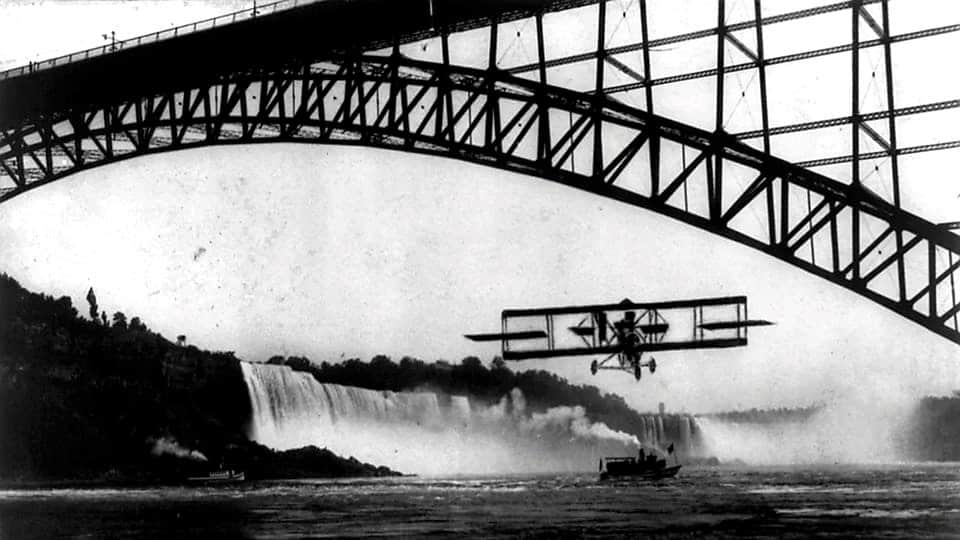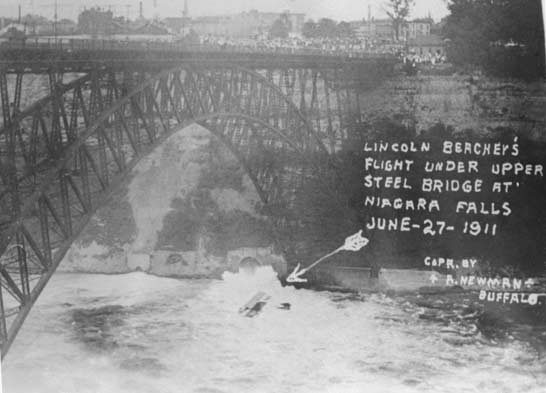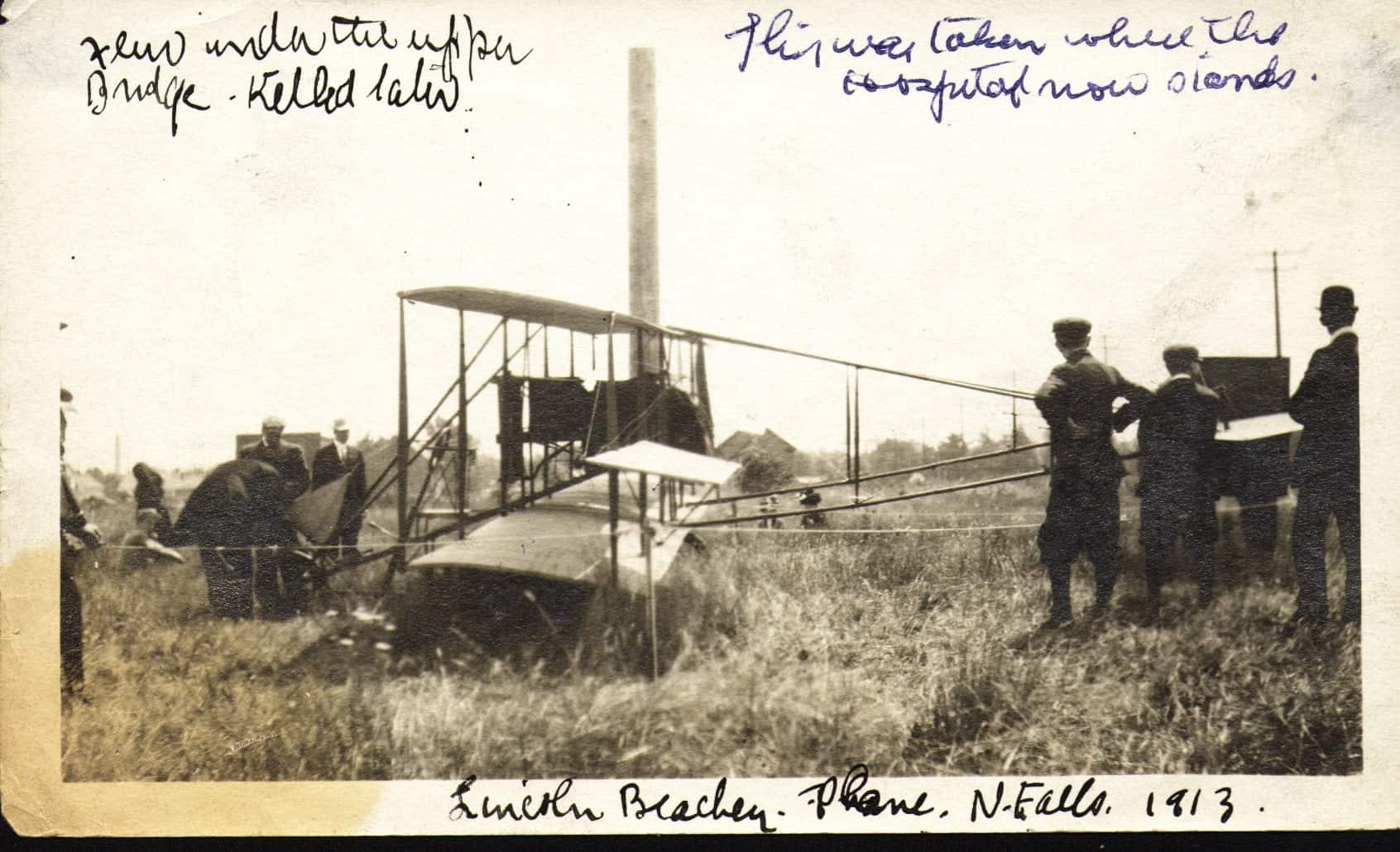First successful flight under a Niagara Falls bridge in 1911 took place years before its collapse
Published March 10, 2023 at 3:09 pm

The photo of pilot Lincoln Beachey flying this Curtiss Model D Pusher Biplane under the Honeymoon Bridge on June 27th, 1911, is actually a larger story than this non-so-simple flight.
Recently posted on the “Historical Niagara” Facebook page by administrator and local history buff Dave Bennison of Welland, he noted simply, “One of my favourite Historical Photos of Niagara Falls.”
Of course, continual ice block pressure at the base of the Honeymoon Bridge – at that time, the world’s longest bridge at 840 feet – would cause its metal structural beams to buckle, and it completely collapsed on Jan. 27, 1938, some 27 years after Beachey’s flight.
So while the pilot, who died in 1915 at 28, was safe from the bridge disaster, he may have been considered lucky to get through this stunt with his life intact.

A photo of Beachey’s successful flight taken from the American side.
You see, Beachey started his career flying in dirigibles and air balloons. But in 1911, he joined the exhibition team of aviation pioneer Glenn Curtiss.
So how was Beachey’s transition from dirigibles and air balloons to airplanes? Not smooth.
Unfamiliar with Curtiss’ designs, he crashed three times while learning to fly them. While he was indeed fortunate to survive three plane crashes, once he got the hang of it, he soon achieved mastery of this new biplane.
In the Summer of 1911, the organizers of the U. S.-Canadian Carnival offered $1,000 to the first person to fly an aeroplane over Niagara Falls.
Beachey was game to try in his Curtiss D biplane, and on June 27, 1911, he took off into a drizzle and flew over the lower falls of Niagara Falls, then above the American Falls in front of 150,000 spectators.
While gradually climbing, Beachey circled his plane over the falls several times. As soon as he was done circling, he dove down into the mists of the falls, within six meters (20 feet) of the surface of the Niagara River in the gorge.
He triumphantly buzzed his plane under the Honeymoon Bridge and down the length of the Niagara Gorge.
While the spectators were thrilled at his success, one local paper described his plane as looking like “a beat-up orange crate.” Since it’s a black-and-white photo, we’ll have to take their word on the biplane’s actual colour.
While he drowned after losing control of a plane over San Francisco Bay in 1915, no less than Orville Wright once said of him, “An aeroplane in the hands of Lincoln Beachey is poetry. His mastery is a thing of beauty to watch. He is the most wonderful flyer of all.”

After seeing the original photo in the “Historical Niagara” Facebook page, another local history buff, Dougie Jay, posted this picture of the plane parked in a field at the Niagara Falls General Hospital site on Jepson Street in 1913.









